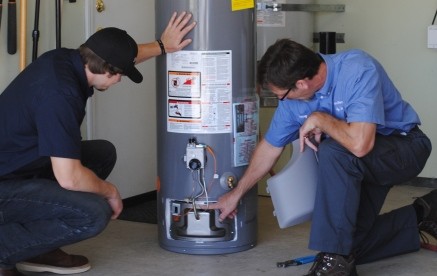Texas Homeowners Guide | How to Flush Your Water Heater
- Jeff Hendricks

- Aug 22
- 3 min read
Updated: Aug 26
Owning a home in Texas brings a unique mix of pride and responsibility. Among the many systems that quietly work behind the scenes, the water heater is often taken for granted—yet it plays a vital role in daily comfort. From the bustling streets of Dallas to the cultural hubs of Houston, Austin, and San Antonio, your water heater guarantees a steady flow of hot water. But the Lone Star State poses challenges that many homeowners overlook. Hard water, laden with minerals like calcium and magnesium, slowly accumulates at the bottom of your tank, forming sediment that can choke efficiency, inflate energy bills, and even precipitate early failure.
Why Flushing Matters in Texas
Texas water quality is far from uniform. In regions where hard water dominates, sediment buildup becomes a silent enemy. Ignoring it can have cascading consequences:
Your water heater’s efficiency plummets, forcing it to burn more energy to maintain temperatures—hello, higher bills.
That ominous rumbling or popping? It’s sediment interacting with hot water, a clear warning sign.
Corrosion lurks beneath the surface, potentially causing leaks and expensive repairs.
Left unchecked, your water heater’s lifespan shortens, leading to premature replacement.
Regularly flushing your tank is a straightforward, cost-effective method to combat these issues. Doing so not only improves performance but also ensures your hot water system serves you faithfully for years.
Step-by-Step Water Heater Flushing Guide:

1. Turn Off the Power or Gas
Electric units: flip the breaker in your electrical panel.
Gas units: set the thermostat to “pilot” or turn off the gas supply.
2. Shut Off the Cold Water Supply
Close the valve at the top of your water heater to prevent new water from entering.
3. Attach a Garden Hose
Connect a hose to the drain valve at the bottom and direct the other end to a floor drain, utility sink, or outside.
4. Drain the Tank
Open the drain valve carefully—hot water mixed with sediment can be deceptively harsh.
5. Flush With Fresh Water
Briefly open the cold water supply to stir up lingering sediment. Repeat until the water runs clear.
6. Refill the Tank
Close the drain valve, disconnect the hose, and refill the tank with cold water.
7. Restore Power or Gas
Turn the breaker back on or relight the gas pilot. Double-check for leaks and confirm normal operation.
Extra Tips for Texas Homeowners
Flush annually; in hard water regions like El Paso, San Antonio, and the Texas Hill Country, consider every six months.
Installing a water softener reduces mineral buildup and extends your water heater’s life.
Listen for unusual noises—popping or rumbling is a signal your tank needs attention.
Water heaters over 10 years old should be inspected by a professional before flushing.
Regularly test the pressure relief valve to ensure safety.
Benefits of Regular Maintenance
Lower utility bills thanks to improved energy efficiency.
Reduced risk of leaks or sudden failures.
Prolonged lifespan of your water heater, saving replacement costs.
Cleaner, sediment-free water for everyday use.
Flushing your water heater might feel like a minor chore, but for Texas homeowners, it’s an essential act of home stewardship. With a few tools and careful attention, you can remove sediment, optimize efficiency, and enjoy uninterrupted hot water year-round. Maintaining your water heater isn’t just about convenience—it’s about safeguarding your investment and keeping your home running smoothly in the long Texas heat.








Comments